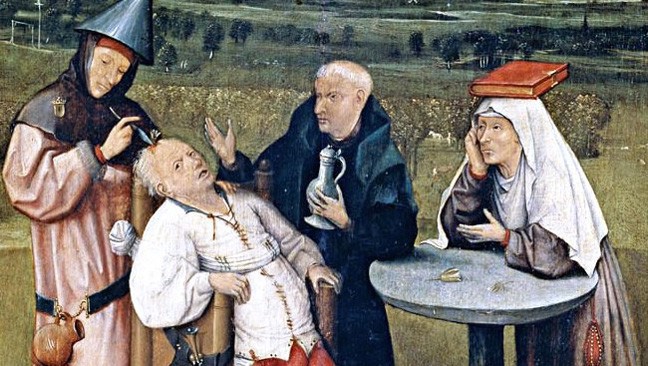Medieval Medical Madness: The Strange and Surprising History of Ancient Medical Practices
In the labyrinth of medical history, the bygone eras stand as time shrouded in mystery, superstition and a curious blend of ingenuity and ignorance. From bizarre concoctions brewed in dimly lit apothecaries to unconventional treatments administered by physicians, the medical practices of the Middle Ages evoke a sense of fascination and intrigue. The era which spanned the late 18th to early 20th centuries witnessed significant advancements in science, technology and culture yet simultaneously saw the persistence of outdated or pseudoscientific practices like Phrenology.
Phrenology is the study of the conformation of the skull. The pseudoscience theorized that the brain was composed of different compartments or ‘faculties’, each containing different humors which were said to be fluids responsible for different emotions, mental capacity, and sometimes spiritual beings. Phrenology grew particularly popular in the 20th century but has now been wholly discredited by scientific research.
According to the hypotheses of Franz Joseph Gall, a German doctor in the late 1700s, Phrenology was based on five principles: firstly, the brain is the organ of the mind; second, human mental powers can be analyzed into a definite number of independent faculties; thirdly these faculties are innate, and each is located in a definite region of the brain’s surface; fourth, the size of such regions is the measure of the degree to which the faculty affects the character of the individual; five, by looking at the outer shape of an individual’s head, the size of different faculties of the brain can be determined.
Although Phrenology was defined and popularized in the middle ages, a dark practice that manifested from similar beliefs has been in use since the mesolithic period around 6000 B.C. This medical practice is known as Trepenation, which saw doctors boring a hole in a patient’s skull (without the use of anesthesia). When the hole was drilled in the patient’s skull, it was intended to drain excessive humors and restore balance in the head. The technique allowed practitioners to release the ‘evil spirits’ as they were hypothesized to be the cause of mental illness. Trepanation was also used to cure migraines and epileptic seizures.
The reason to which doctors at the time so strongly believed in the theory of Phrenology was due to the evidence presented through Trepanation (or so they thought). Through research, we now understand that past the skull, the brain is suspended in Cerebrospinal fluid (CSF). At the time, when breaking through the skull, these ancient physicians see CSF and regard this mysterious fluid as confirmation of their belief in Phrenology and Trepanation’s ability to restore balance in the head.
Trepanation is one of the oldest surgical practices, and is an early iteration of the modern day craniotomy. Similar to other medical practices in medieval times, the use of Trepanation as a cure for the mentally ill was born from rituals and spirituality rather than concrete science.
Thousands of years from now, when historians, scientists, and archaeologists sift through our digital relics, they’ll probably find us relying on Google for medical advice, just like ancient civilizations trusted in bizarre remedies. It’s as if we are passing down the tradition of questionable healthcare practices, only now we’ve traded potions and trepanation for search engines!
